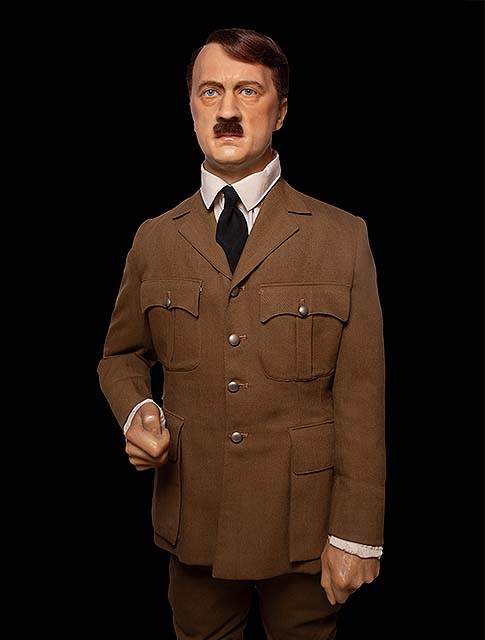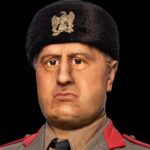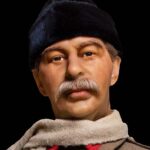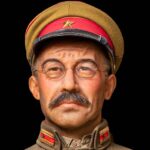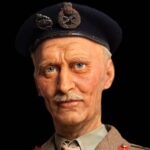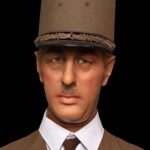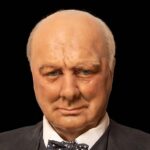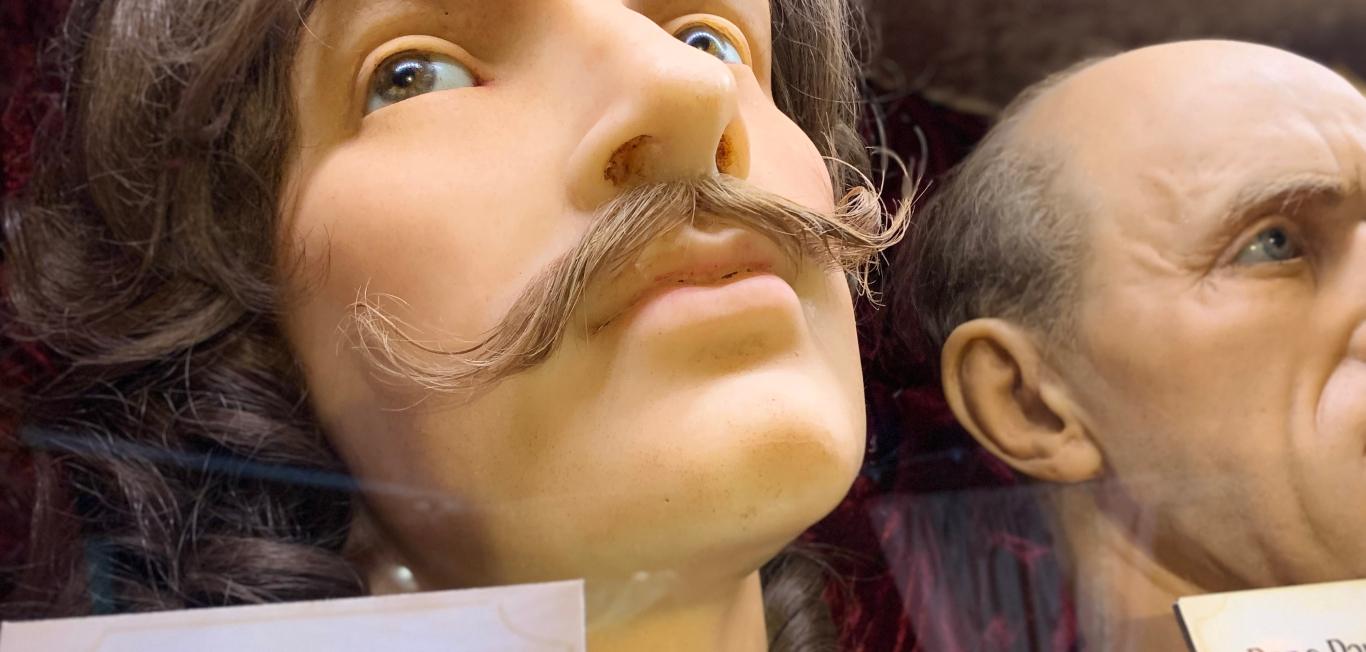Biography of Adolf Hitler
Adolf Hitler began his political career as a member of the German Workers’ Party in 1919, renamed the Nazi Party in 1920. In just 14 years, Hitler would rise to become the chancellor and Führer (or “leader”) of Germany, leading the country on a territorial expansion of eastern Europe that would result in the breakout of World War II, utilizing propaganda and well-timed political moves to elevate himself to the absolute dictator of Germany and of his Third Reich.
Seeing his country suffering under the devastating effects of the Treaty of Versailles after World War I, which sought to keep Germany forcefully suppressed, Hitler used his power to undo military and economic restrictions, hoping to turn Germany back into a global superpower. In his success, Hitler saw an opportunity to execute his two biggest plans – to territorially expand the German state and to cleanse the domain of “impure” peoples to create a land of Aryan purebloods.
During World War II, Hitler led Nazi Germany in the fight against the Allied powers. While he saw some success in the war, most notably in his antisemitic attacks against Jewish Europeans, through the Holocaust, Hitler ultimately saw defeat and took his own life, leaving Germany to suffer the aftermath of the war without the leader who instigated it.
Hitler died on April 30, 1945, at the age of 56. His legacy is heavy with the blood of six million Jewish Europeans and tens of millions of global deaths from World War II, to which he is attributed as the sole perpetrator. He is remembered for his cruelty and supremacist ideals and has left a permanent stain on German history.
DID YOU KNOW?
Hitler used his power to undo military and economic restrictions, hoping to turn Germany back into a global superpower.
Interesting Facts
Alios Hitler, father to Adolf Hitler, was an illegitimate child who eventually took his stepfather’s (Johann Georg Hiedler) name. When Alios became a customs agent in Vienna, Austria, officials misspelled Hiedler on documentation, giving birth to the Hitler name.
Adolf Hitler had a passion for the arts at a young age but was rejected from admission to the Academy of Fine Arts Vienna twice in 1907 and 1908. Hitler’s education never went beyond secondary as a result.
Officially, Hitler had no children. However, in 1977, Jean-Marie Loret, a French railway worker, publicly stated that he believed himself to be the illegitimate son of Adolf Hitler, born after a brief affair with his mother, Charlotte Lobjoie, during World War I when Adolf was a German soldier stationed in France. There has been no official confirmation of this claim.
Adolf Hitler did not eat meat or drink alcohol in the later years of his life.
After serving nine months in prison for committing treason, Hitler was accompanied by his half-sister, Angela Raubal, and her two daughters to live near Berchtesgaden. He became obsessed with one of her daughters, Geli, and it is thought that his possessiveness drove her to commit suicide in 1931.
Eva Braun, Hitler’s third and final wife, became his mistress in the early 1930s. Initially, Hitler was rarely seen in public with her and wouldn’t consider marriage due to the potential negative effects it could have on his career. However, he would eventually honor her unwavering loyalty and devotion to him in marriage, a day before their deaths in 1945.
Early Life
Adolf Hitler was a German politician and dictator who led Nazi Germany from 1933 until his death in 1945. Born April 20, 1889, in Braunau am Inn, Austria, to parents Alios and Klara Hitler, Adolf was the first of their four children to survive past infancy. Raised in a household with an abusive father, Hitler learned violence at a young age. In 1903, when Hitler was just 14, his father died suddenly, leaving him with a loving mother whom he remained devoted to until her passing four years later in 1907.
After a double rejection from art school, Adolf grew lonely and isolated, drifting between hostels and making money painting postcards and advertisements in Vienna. In 1913, he moved to Munich, Germany.
While initially classified in early 1914 as unfit to serve in the Austrian military due to inadequate physical vigor, Hitler petitioned Bavarian King Louis III to be allowed to serve when World War I broke out. One day after he sent his request, Hitler was permitted to join the 16th Bavarian Reserve Infantry Regiment, where he would serve as a soldier and corporal until the end of the war in 1918.
During the war, Hitler was wounded in October 1916 and gassed in 1918 near Ypres, where he remained hospitalized until the conflict ended that same year. It is in the military that Hitler finally found a home, finding joy in the comradeship and discipline it provided, and giving him his first taste of war.
After the war, Adolf Hitler would go on to become involved in politics as an army political agent, joining the German Workers’ Party in 1919. The following year, he was put in charge of the party’s propaganda and left the army to focus on developing a position and power in the party. In 1920, the party was renamed to the National-sozialistische Deutsche Arbeiterpartei (in English, the National Socialist German Workers’ Party, or the Nazi Party as it’s most commonly known).
DID YOU KNOW?
It is in the military that Hitler finally found a home.
In April of 1924, Hitler was sentenced to five years in prison for treason after unsuccessfully attempting a coup d’état of Germany by force in the November 1923 Beer Hall Putsch, a necessary lesson that pushed Hitler to achieve his desired power through legal means. This forceful attempt for power was in the hopes that it would spark a national revolution against the Weimar Republic (or German Republic), which was the main democratic political power in Germany at the time. He only served 9 months in prison, where he wrote the first volume of his political manifesto, Mein Kampf (or “My Struggle”). This marked the beginning of the most historically significant parts of Hitler’s life.
World War I and the Treaty of Versailles
The Treaty of Versailles was a 1919 peace treaty signed at the end of World War I between the Allied powers and Germany in the Palace of Versailles, France. This treaty is widely considered to be one of the main factors behind the rise of the Nazi Party and the development of World War II, as it built a legacy of resentment and economic hardship for Germany in the years between the two wars.
As a whole, the treaty was designed to keep Germany under oppressive foreign control in hopes of preventing further devastating conflicts, with five main categories of notable highlights. The first was the “guilt clause,” demanding Germany accept full responsibility for World War I, which many Germans found to be dishonorable and unfair, spending many of those early years after the war trying to persuade other countries it had not been the sole perpetrator.
The second came with reparations, which were devastating to Germany’s economy. Initially, Germany was meant to compensate the Allies (specifically France, Britain, and Belgium) for war damages. They owed 132 billion gold marks in cash, goods, and raw materials. This debt was eventually adjusted in 1921 to £6,600 million, with more adjustments made to the amount due and payment period in the following years. All German assets abroad were also seized, leaving the country with an inconsiderable debt that was finally paid off in 2010, roughly 90 years after the treaty was signed. It is important to note that Hitler canceled all reparation payments in 1933, which was in direct violation of the treaty.
The third saw heavy land losses for Germany, as they lost all of their colonies and multiple regions to various countries, as well as the League of Nations, which is the fourth result of the Treaty of Versailles. The League of Nations was established as a framework for global peace and welfare on the basis of diplomatic engagement over violent attacks as a way to prevent future war. While designed with good intent, execution didn’t see such success. Woodrow Wilson, the 28th President of the United States, although having promoted the idea of the League of Nations, never actually had the country join the international agreement. Germany didn’t join until 1926 and left by Hitler’s command in 1933, only seven years later.
The last effect on Germany from the Treaty of Versailles saw heavy military restrictions in an effort to keep the country in a position of submission to prevent another repeat of the First World War. Caps were placed on various branches of the military, with the army being limited to 100,000 men and the navy seeing an even harsher limit of 15,000 men. Germany also had to agree to end conscription and give up the right to build tanks, submarines, battleships, or aircraft. Seeing the dissatisfaction and suffering the German people were going through under the stress of the treaty, Hitler saw an opportunity to leverage propaganda in successful efforts to build the Nazi Party and his own position within the government as its eventual dictator.
Adolf Hitler’s Role in World War II
Adolf Hitler played a critical role in World War II as the leader of the Nazi Party and Führer und Reichskanzler (in English, “leader” or “guide”) of Germany. After building the Nazi Party off of propaganda against the Treaty of Versailles and under the guise of wanting peace for the German people, Hitler and the Nazi Party made a series of successful political moves to eliminate all parties, organizations, and unions not associated with the Nazi Party. This gave the party immense power and control over Germany, with Hitler at its head.
Taking more interest in foreign policy over domestic affairs, Adolf Hitler worked to undo the restrictions placed upon Germany by the Treaty of Versailles with the intent to eventually unify all German peoples through eastern territorial expansion, even at the cost of conflict with historical European enemies, primarily the Soviet Union and France. Between 1933 and 1936, Hitler cancelled all reparation payments, reinstated conscription, pulled out of the League of Nations, and negotiated a naval treaty with Britain to allow Germany to once again build its naval power without restriction. All of these political moves helped to lift Germany back into a position of power necessary for Hitler’s desired European expansion.
After establishing the Anti-Comintern Pact with Italy and Japan in 1937 against the Communist International (and the Soviet Union specifically), Hitler’s Third Reich (or “Third Empire”) finally became the principal European power, establishing his allies (also known as the Axis powers) in the eventual Second World War.
On September 1, 1939, Hitler organized a German invasion of Poland. Two days later, on September 3, 1939, Britain and France declared war against Germany, marking the beginning of World War II. In the following years, alliances would be formed to create two separate powers, the Allied and Axis powers. In 1940, Italy joined the Axis powers with Germany.
DID YOU KNOW?
In 1937, Hitler’s Third Reich (or “Third Empire”) finally became the principal European power.
1941 was a big year in terms of war involvement. On June 22, 1941, Hitler led an attack on the Soviet Union (or the U.S.S.R.), capturing around 3 million Russian prisoners, causing the Soviet Union to join Britain and France in the Allied powers of the war. Later, on December 7, 1941, Japan would launch a surprise attack on the United States military base, Pearl Harbor, located in the Hawaiian Islands. This attack and the existing alliance between Germany and Japan forced Hitler to declare war on the United States, even though he had no involvement in the bombing of Pearl Harbor. Japan would go on to join the Axis powers, while the United States and China (who had seen conflict with Japan throughout the 1930s) would go on to join the Allied powers, solidifying the main players in World War II.
The Holocaust
Arguably, the most significant event Adolf Hitler is historically known for is the Holocaust. One of the main foreign efforts made by Hitler and the Nazi Party was to rid Europe of all Jewish and other “inferior” peoples, wanting to establish an expanded German nation (the Third Reich) filled with entirely pure-blooded Aryans. This included persecution of Jewish people, Catholics, homosexuals, Slavs, Romanis, Poles, disabled people, and any others they deemed impure.
Of those listed above, no group was persecuted more than the Jewish people. From 1941 to the end of the war in 1945, over 6 million Jewish people were executed in extermination camps as ordered by Nazi Germany (roughly two-thirds of Europe’s Jewish population). But Jewish persecution didn’t start in 1941. As soon as Hitler was named Chancellor of Germany in 1933, discriminatory laws were set in place, and social ostracism for the Jewish people began, as he held strong anti-Semitic views throughout the entirety of his career (documented as early as 1924 in the first volume of his Mein Kampf).
The first concentration camp, Dachau, was established on March 22, 1933. While it was initially built to hold political prisoners, it quickly became the model for future concentration camps. Between 1933 and 1939, six concentration camps were established under German rule. After the outbreak of World War II in 1939, camps rapidly grew in numbers, usually targeting Jewish groups and placing them in unlivable conditions. It wasn’t until 1941 that Hitler and the Nazi Party came up with their “Final Solution,” which saw the deportation of Jewish people to extermination camps, such as the infamous Auschwitz complex, where they were mass murdered, utilizing gas chambers as the primary form of execution.
In his last will and testament, Adolf Hitler ordered the German people to continue their struggles against the Jewish people, his strong antisemitic views carrying through even his dying wishes. The Holocaust ended with the German defeat in World War II.
Accomplishments
During World War I, Adolf Hitler was awarded for his bravery on the front lines as a headquarters runner with the Iron Cross, Second Class, in December 1914, and the Iron Cross, First Class, in August 1918.
In March 1936, Hitler marched into Rhineland, an area of western Germany that had previously been forcefully demilitarized under the agreements of the Treaty of Versailles.
Adolf Hitler successfully established the Third Reich (or “Third Empire”) during his regime from 1933 to the defeat of the Germans in 1945 at the end of World War II, presumably as a successor to the First Reich (or the Holy Roman Empire of 800 to 1806) and the Second Reich (or the German Empire of 1871 to 1918, which ended after their defeat in World War I).
On August 23, 1939, Hitler signed a nonaggression pact with the Soviet Union, widely considered one of the greatest diplomatic surprises in history.
Throughout his career, Hitler was able to unite the German and Austrian people behind him, many remaining steadfast in their loyalty to him, even after his death in 1945.
Late In Life
Several attempts were made on Hitler’s life in 1943-44, with the closest assassination occurring on July 20, 1944, when a bomb was detonated in his East Prussia headquarters during a conference. Around this time, Hitler began to grow increasingly ill as the Allied powers began to gain back power and effectively counter any war efforts he made in the late years of World War II.
As Soviet forces began to close in around Berlin in early 1945, Hitler began to accept inevitable defeat, prepared to take his own life over capture and punishment. At midnight on April 29, 1945, just a day before their deaths, Adolf Hitler would marry his longtime girlfriend, Eva Braun. Following their wedding, he made his final political testament, appointing Admiral Karl Dönitz as the head of state and Joseph Goebbels as chancellor.
On April 30, 1945, Adolf Hitler retired to his Führerbunker suite in Berlin, Germany, and shot himself to death. His wife, Eva Hitler, also died on the same day, taking her life by means of cyanide poisoning. Their bodies were burned.
Adolf Hitler is remembered for his cold brutality and avid hatred for those he deemed “impure”, most notably the Jewish people. Many agree with Hitler’s historical significance; he is often attributed as the sole instigator of World War II and is therefore considered responsible for the 70 to 85 million war-related deaths. While his mental health is a popular debate, with people associating his behaviors with madness, it’s important not to downplay his actions, which are still horrific regardless of potential mental effects. In a history rich with dictators, Hitler stands out as one of the cruelest, incomparable to any other national German leader to this day.
DID YOU KNOW?
On April 30, 1945, Adolf Hitler shot himself to death.
FAQs
How did Adolf Hitler die?
On April 30, 1945, Adolf Hitler committed suicide in his Berlin headquarters by means of a gunshot wound to the head. Knowing that his defeat in World War II was inevitable, he chose to take his own life alongside his new wife over capture and subsequent punishment.
How did Adolf Hitler rise to power?
After World War I and the Treaty of Versailles left Germany in a state of resentment and economic hardship, Adolf Hitler utilized propaganda with the Nazi Party to build support from the German and Austrian peoples. With the success of this propaganda, the Nazi Party was able to rise as the sole political power in the German state, with Hitler as its chancellor and eventual dictator.
What was Adolf Hitler’s childhood like?
Adolf Hitler’s childhood was one of violence and abuse under the hand of his father. After his father died in 1903 and the eventual death of his loving mother in 1907, Hitler became isolated and lonely, lost in his unsuccessful attempts to get an education and a career in fine arts.
Why was Adolf Hitler imprisoned?
Adolf Hitler was imprisoned in April of 1924 after he helped attempt a forceful coup d’état of Germany in November 1923 with the hope of starting a national revolution against the democratic Weimar Republic, the main political power of Germany at the time. While he was sentenced to five years in prison, Hitler only served nine months.
